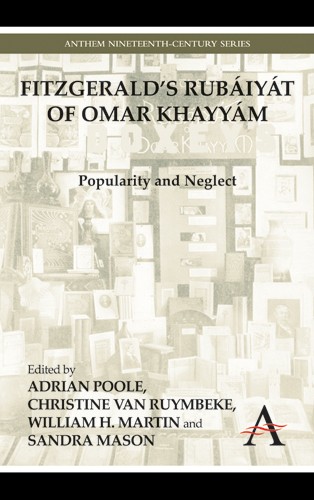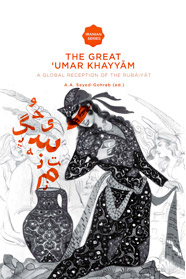 This title from Anthem Press, edited by Adrian Poole, Christine van Ruymbeke, William H. Martin and Sandra Mason, was initially published in 2011, but is now available as Ebook.
This title from Anthem Press, edited by Adrian Poole, Christine van Ruymbeke, William H. Martin and Sandra Mason, was initially published in 2011, but is now available as Ebook.
The volume of essays is based on a conference held in July 2009 at Trinity College, Cambridge to celebrate the bicentenary of the birth of Edward FitzGerald (1809) and the 150th anniversary of the first publication of his ‘Rubáiyát of Omar Khayyám’ (1859). The ‘Rubáiyát’, loosely based on the verses attributed to the eleventh-century Persian writer, Omar Khayyám, has become one of the most widely known poems in the world, republished virtually every year from 1879 (the year of FitzGerald’s fourth edition) to the present day, and translated into over eighty different languages. And yet, with a few exceptions, it has been systematically ignored or at best patronized by the academic establishment. This volume sets out to explore the reasons for both the popularity and the neglect. Broadly speaking, the essays are divided into two main blocks. The first six chapters focus primarily on the poem’s literary qualities (including consideration of its place in the tradition of verse translation into English, the idea of ‘nothingness’, and ‘syntax and sexuality’), the last five on aspects of its reception (including essays on the late-Victorian Omar Khayyám Club, on American parodies, and on the many illustrated editions). They are linked by three essays that address key ‘facilitators’ in the poem’s transmission (including the significant but neglected issue of cheap reprints).
Click here for more information, and to order the book.
 French novelist and essayist Renaud Mercier published a versified adaptation of the quatrains from the Bodleian manuscipt, based on the edition by Edward Heron-Allen of 1898. In a short introduction the translator explains why the rhyme scheme has been altered to AABB, which means that there is no ‘free’ third line, as not to discomfort French ears.
French novelist and essayist Renaud Mercier published a versified adaptation of the quatrains from the Bodleian manuscipt, based on the edition by Edward Heron-Allen of 1898. In a short introduction the translator explains why the rhyme scheme has been altered to AABB, which means that there is no ‘free’ third line, as not to discomfort French ears. The book The Great ’Umar Khayyam, which consists of 18 essays about Khayyam’s influence, shows that traces of Khayyam can be found throughout Western literature and culture. Dutch poets such as Leopold and Boutens were inspired by him, for instance, but the quatrains also made their mark in 20th century painting and music.
The book The Great ’Umar Khayyam, which consists of 18 essays about Khayyam’s influence, shows that traces of Khayyam can be found throughout Western literature and culture. Dutch poets such as Leopold and Boutens were inspired by him, for instance, but the quatrains also made their mark in 20th century painting and music. This title from Anthem Press, edited by Adrian Poole, Christine van Ruymbeke, William H. Martin and Sandra Mason, was initially published in 2011, but is now available as Ebook.
This title from Anthem Press, edited by Adrian Poole, Christine van Ruymbeke, William H. Martin and Sandra Mason, was initially published in 2011, but is now available as Ebook.